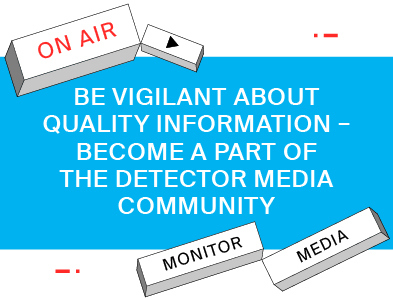Українською читайте тут.
An overview of media organizations providing financial, organizational, mentorship, and training support to local and relocated media outlets.
In the fourth year of the full-scale war, the primary challenge facing regional media is the need for donor funding. According to research by the Media Development Foundation, staffing shortages have worsened due to ongoing mobilization and team burnout, while financial instability creates uncertainty about the future of independent newsrooms.
Data from Lviv Media Forum (LMF) shows that nearly 30% of Ukrainian media outlets suspended operations at the start of the war but gradually resumed their work. While substantial and diverse donor support initially saved many outlets from closure, the reduction in American assistance has once again placed media in a difficult position. A lack of funds, material resources, and personnel is forcing newsrooms to cut costs — often resulting in reduced content production or a decline in content quality.
At the same time, the crisis has prompted media outlets to begin transformations: closer engagement with audiences, the launch of new digital formats, stronger oversight of local authorities, and a sharper focus on user needs. There is also a growing understanding that survival and funding require adherence to professional standards and the development of a loyal audience that could potentially support stable monetization in the future. Under different circumstances, advertising might have helped, but due to the war, this is currently unfeasible. As a result, most local and regional media outlets operate with little to no income and rely heavily on donations or assistance from non-governmental organizations. The situation significantly worsened earlier this year when USAID funding ceased.
Nevertheless, several organizations in Ukraine continue to support regional and local media. Detector Media highlights the major ones to systematize information about the aid initiatives currently focused on regional and local newsrooms. This is the first part of the article; the second part will cover the activities of NAM, MDF, National Union of Journalists of Ukraine, DMF, and the "Abo" agency.
Association of Independent Regional Publishers of Ukraine

The Association of Independent Regional Publishers of Ukraine helps build successful editorial teams at the local and regional levels. "Over the years since the full-scale invasion, through various projects, we have worked with more than 150 regional newsrooms. We support the entire market of Ukrainian regional and local print and online media, not limited to our association members. Supporting independent local journalism is a shared interest of all colleagues," says the association’s director, Oksana Brovko.
Forms of support provided include professional training, financial support for local media, journalist safety, and international cooperation.
Among the association's projects are the International Journalists’ Insurance Fund (in coalition with other organizations, including Detector Media) and “Innovative Media of Ukraine.” In 2025, the association launched four more projects: “Plan B,” “Media Bridges: Finland–Ukraine,” “Bootcamp: AI in Journalism,” and “Stronger Together: Media and Democracy.”
Oksana Brovko explains that when the full-scale war began, the top priority was physical safety. The association focused on sourcing and delivering bulletproof vests, helmets, medical kits, power banks, charging stations, relocating teams, and evacuating them from the frontline or occupied territories. Another challenge was the shortage of newsprint: before the war, most of the paper used by Ukrainian newspapers came from Belarus or Russia. “In some cities under occupation, Russian forces took all the paper from printing houses, as happened to our colleague in Kherson. In other places, paper stock was destroyed in strikes. So, alongside safety support and fundraising for newsrooms, I took on an unusual task for a media manager—finding paper for our newspapers,” Brovko recounts. In the first two years of the war, with help from donors and partners, the association delivered over 345 tons of newsprint to Ukrainian media outlets.
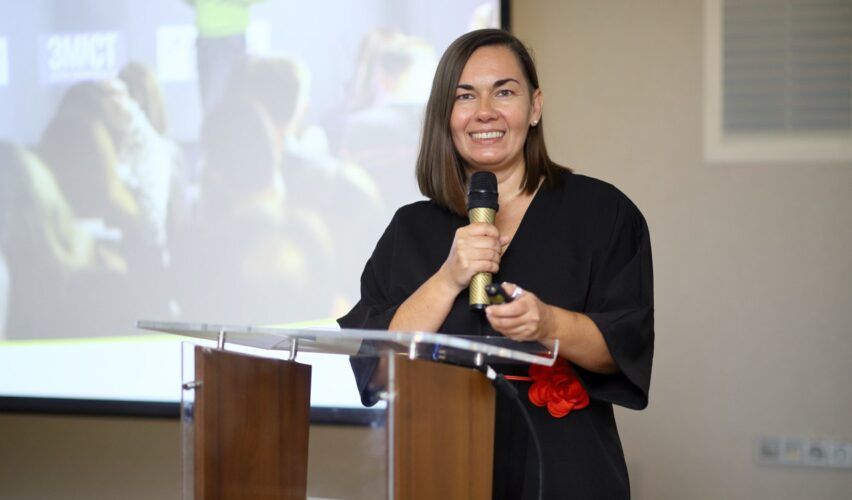
According to Brovko, regional media now need long-term institutional donor programs: "Over time, the issue of financial support for regional and local media has become more pressing. Not project-based, but institutional—support that covers organizational expenses and ensures newsroom stability. For two years, I have advocated with donors, partners, and European governments for a shift from specialized project grants to strategic institutional support for regional and local media—those whose teams are ready to continue investing their time and effort into media development. Strategic, long-term support is essential to the sustainability of independent media—and thus to the preservation of free speech. I am truly glad we were heard: as a result, the Norwegian government added a dedicated media support block to the Nansen Program. Our project, ‘Stronger Together,’ is one of the key parts of this strategy for institutional support of independent regional press over the next three years."
“Stronger Together: Media and Democracy” is the association’s largest new project this year. It was launched in partnership with the World Association of News Publishers (WAN-IFRA) and the Norwegian Media Businesses’ Association (MBL), with support from Norway. This three-year media support program, with a budget of 70 million Norwegian kroner, will cover up to 75 regional and local media outlets across Ukraine. It includes three sub-programs: “Gender Equality and Inclusion,” “Financial and Organizational Resilience,” and “Transparency and Anti-Corruption.” As part of this program, a Ukrainian delegation attended the World News Media Congress in Kraków in early May, where the Ukrainian press was honored with the Golden Pen of Freedom 2025 award.
"The experience of the past three years in the media market, and feedback from colleagues, revealed a key issue: there are plenty of training and mentoring programs, but a lack of funding for day-to-day operations—let alone new projects. That’s why, in ‘Stronger Together,’ we are focusing on a smart combination of mentoring, training, and financial support—so that editorial teams can actually implement new ideas. We don’t want to overwhelm media with mentorships; we want to create a supportive environment where they can access the expertise they need while still having the funds to meet basic needs and grow. We plan to announce the first group of selected media outlets for institutional support soon. In June, we’ll reveal the list of media participating in the investigative journalism component of the project,” says Oksana Brovko.
The “Plan B” project was launched in cooperation with Norwegian partner Amedia Foundation. It provides urgent financial aid to media outlets affected by the closure of American donor grant programs. This is a short-term emergency aid project lasting up to five months.
“A lot of outlets were hit hard, and everyone was scrambling. So we responded quickly. It was clear that frontline and, more broadly, regional and local media were at greatest risk. Losing funding put their operations in jeopardy—advertising markets collapsed after the full-scale invasion, and in frontline areas, they basically disappeared as businesses shut down or struggled to survive,” says Brovko. She adds that newsrooms haven’t had the chance to build sustainable business models—the priority has been fast response to wartime challenges, which puts many outlets at risk of closure. Applications for the project opened in February. The goal was to provide urgent financial help to the most vulnerable media outlets—to minimize the impact of lost funding and help them adapt and seek new paths to sustainability.
50 regional and local print and online media outlets from Odesa, Zaporizhzhia, Kherson, Chernihiv, Poltava, Donetsk, and other regions are participating in the program.
Another project by the Association is the two-year program “Media Bridges: Finland–Ukraine.” Its Finnish partners include leading media outlets such as Helsingin Sanomat, Lapin Kansa, and the Council for Mass Media in Finland (JSN), which, together with News Media Finland, provide expert support to strengthen Ukrainian regional media. On the Ukrainian side, ten regional newsrooms are participating in the project. In addition to monthly online meetings, the project includes educational tours to Helsingin Sanomat (Helsinki) and Lapin Kansa (Lapland), as well as grants for an information campaign on self-regulation.
“We’re also developing the direction of responsible AI use in newsrooms through the project ‘Bootcamp: AI in Journalism.’ This is a series of webinars aimed at enhancing regional editorial teams’ skills in using AI tools. We discussed the key precautions when using artificial intelligence, held workshops on using ChatGPT (with input from both European and Ukrainian colleagues), and explored AI tools for video editing and more,” adds Oksana Brovko.
Among the Association’s earlier initiatives:
- The International Journalists’ Insurance Fund (launched in 2022 by the AIRPU in partnership with the Suspilnist Foundation, Institute of Mass Information, Detector Media, Centre for Democracy and Rule of Law, and the Institute for Regional Press Development). This project offers free insurance for media workers, as well as safety and psychological training as part of broader efforts to protect Ukrainian journalists.
- In 2024, the Association, in partnership with the Media Development Investment Fund (MDIF), launched the project “Innovative Media of Ukraine.” It aims to provide financial and mentoring support for regional editorial business initiatives. Within its first year, the program supported five Ukrainian regional media outlets: Hryvnia (Kherson), Kremenchuk Telegraph (Kremenchuk), Kolo.news (Poltava), Odesskaya Zhizn (Odesa), and Molodyi Bukovynets (Chernivtsi). Participants shared effective strategies for video content development in regional media, experiences in monetizing YouTube channels, and achieving financial independence even in wartime.
- The project “Women in Media” (not to be confused with the media outlet of the same name) was launched in 2022. It provides both training and financial support to women working in media and fosters the development of female leadership in the industry.
- The Media Congress, a platform for professional communication and experience exchange, is another long-running initiative. This annual event, founded in 2011, targets leaders of regional and local media outlets.
Oksana Brovko, along with Oleksii Pogorelov, President of the Ukrainian Association of Media Business, was recognized by the World Association of News Publishers (WAN-IFRA). In May, Ukrainian independent media were honored with the Golden Pen of Freedom 2025 by WAN-IFRA.
Institute of Mass Information
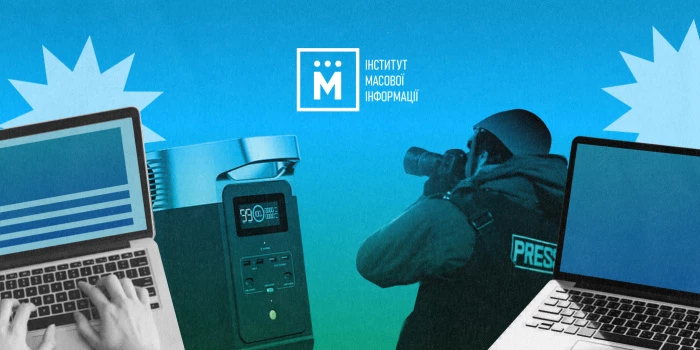
The Institute of Mass Information (IMI) is a Ukrainian media-focused civil society organization that defends journalists’ rights, analyzes the media landscape, covers media-related events, counters propaganda and disinformation, and operates regional MediaBases with representatives in nearly every oblast of Ukraine.
Types of support provided include: training sessions, co-working hubs for blackout periods, protective and technical equipment, and mini-grants.
IMI Director Oksana Romaniuk explains that due to Russia’s full-scale invasion, over 300 outlets were forced to shut down because of occupation, intense fighting, or financial collapse. In response, IMI launched a mini-grants program to help media outlets stay afloat. Over the past three years, IMI has awarded nearly 500 mini-grants to regional and local newsrooms. Grantees are selected by experts who assess the media outlet’s quality, transparency, and independence.
“One key criterion is whether the outlet is listed on the Map of Recommended Media [https://map.detector.media] — a project we implement jointly with Detector Media. It’s a useful evaluation tool for us since each outlet on the map has already been vetted. The editorial proposal is also important — what exactly the newsroom wants to implement and what impact it could have,” says Romaniuk.

In addition to financial assistance, IMI launched a network of regional MediaBases for journalists in autumn 2022.
“We wanted to create something like ‘points of resilience,’ but specifically for local newsrooms,” Romaniuk explains. There are currently 15 hubs, including in Sumy, Chernihiv, Mykolaiv, Kharkiv, Dnipro, and Sloviansk. These MediaBases provide journalists with workspaces during blackouts, supply protective gear like bulletproof vests and helmets to both Ukrainian and foreign journalists, host training sessions, and assist with communication between media and local authorities or the military. This work continues despite the loss of U.S. funding. According to Romaniuk, since the start of the full-scale war, IMI’s central office and the MediaBases have delivered protective and technical equipment over 11,000 times to journalists.
The MediaBase network regularly conducts training for media professionals. Recent topics have included social media content adaptation, SEO optimization, first aid, and the ethical use of AI in journalism.
“Additionally, the Kropyvnytskyi MediaBase has already hosted two rounds of its ‘Media School’ project. Journalism students attend lectures from experienced media professionals, then intern at regional newsrooms. This allows them to see the inner workings of newsrooms and gain the practical experience often lacking at the beginning of a media career. After completing the program, some participants are offered full-time positions — helping regional outlets fill staff gaps during a period of talent shortages,” says Romaniuk.
At the start of the full-scale invasion, physical protection was the most urgent need.
“Before 2022, we had just five ‘Press’ bulletproof vests in our safety library. Now we have over a thousand, and they are almost always in use,” she says.
When Russia began targeting Ukraine’s energy infrastructure in fall 2022, journalists’ main needs shifted to electricity and internet access. IMI began mass purchases of generators, power stations, Starlinks, and power banks, distributing them directly to editorial teams and equipping MediaBases.
“Once we provided this survival infrastructure, we shifted focus to mini-grants and training,” Romaniuk explains.
An IMI survey in February 2025 found that over 75% of media outlets relied heavily on U.S. funding in the previous year. After that support was lost, many newsrooms faced financial crises and urgently began looking for new ways to survive. Another IMI survey in April–May 2025 showed that at least one-third of Ukrainian media outlets do not have a strategy for finding new funding sources. The number of outlets reporting they are in “survival mode” jumped from 8% in January to 29% in May 2025.
“We must respond to this need. Right now, we’re actively seeking ways to support Ukrainian media with new mini-grants. We’re not yet talking about institutional support — for now, the priority is simply to secure funding for content production,” says Romaniuk.
Ukrainian Media Business Association

Oleksii Pohorelov and Oksana Brovko Receive the “Golden Pen” Award for Independent Ukrainian Press
The Ukrainian Media Business Association (UMBA) is an association of media companies that publish periodical media across all platforms — including traditional newspapers, websites, official social media pages, and YouTube channels.
Currently, UMBA has over 60 member companies. In early 2022, this number exceeded 80. According to the association’s president, Oleksii Pohorelov, it will only be possible to accurately assess the number of active members after the war ends and lasting peace is established. For now, he says, the main efforts are focused on supporting local media.
Types of support provided: funding, mentoring, and educational programs.
“We see our mission as helping as many local media outlets as possible simultaneously become strong players in their communities — by showcasing the unique potential of media to residents, authorities, and businesses — and enhancing their economic independence by demonstrating how journalism that helps solve local problems can make journalists’ work valuable to the community,” Pohorelov says. To achieve this, he believes that regional media must shift from “criticism for the sake of criticism” to addressing local issues and uniting people.
All UMBA projects include financial support and training. The association helps media organizations improve their grant applications, provides mentoring once funds are received, and later analyzes the results and hosts discussions at conferences. In 2024–2025, over 50 newsrooms from across Ukraine received support from UMBA.
To distribute support to regional media, UMBA announces a competition. Participation is open not only to association members. Applications are reviewed by a jury, which compiles a shortlist.
“Our experts and mentors work closely with the applicants whose proposals make it into the shortlist, helping each newsroom to clearly focus their project on both the problem and the expected outcomes. The results must be measurable and achievable; the newsroom must demonstrate that the problem is real and relevant. The projects that go through this revision process become strongly focused on the needs of their communities. Then, they are submitted for donor approval and, ultimately, receive support,” explains Oleksii.
In 2022–2023, the association’s support was directed toward urgent needs: funding to continue operations, equipment to replace that which had been stolen or destroyed by Russian forces, and solutions for working during power outages. However, according to Oleksii, from the second half of 2023 into 2024, the focus has shifted toward transformation.
“It became clear that local newsrooms needed to take on a new and important role — to serve as effective communication hubs for their communities. New complex problems have emerged in communities, ones that local authorities or any single actor could not solve alone,” he says. “So, media moved from the task of 'survival' to the mission of 'being useful to the community.' In the process of fulfilling this second task, newsrooms gained confidence in their relevance. And people began to feel that they weren’t abandoned, that their voices matter and have an impact. That’s a crucial shift. It builds trust and belief in the strength of the community. This is how local media empower communities. And together — effective local media and empowered communities — we will build a strong Ukraine.”
Today, regional and local newsrooms urgently need funding. “The war has almost completely wiped out their revenues, and the recovery of the local advertising market is currently at just 5–10% of 2021 levels. Another critical issue is that support should cover longer periods — not just one or two months,” Oleksii Pohorelov adds. In addition, he notes a significant need for mentoring programs.
UMBA’s donors and partners include: WAN-IFRA, Schibsted, Agora Foundation, Ukraine Media Fund, the Media Development Fund of the U.S. Embassy in Ukraine, the European Commission, UNESCO, International Media Support, ISAR Ednannia, the Ebert Foundation, the German Marshall Fund of the United States, and other organizations that support the development of free, independent, and sustainable media in Ukraine.
“Donors are funding high-quality Ukrainian journalism grounded in professional and ethical standards — journalism that helps people make informed decisions. This is especially important today — to help people come together and discuss the challenges facing their communities. Through this process of getting answers and contributing their own suggestions for discussion, people see the full picture and feel their significance,” says Oleksii Pohorelov.
Lviv Media Forum
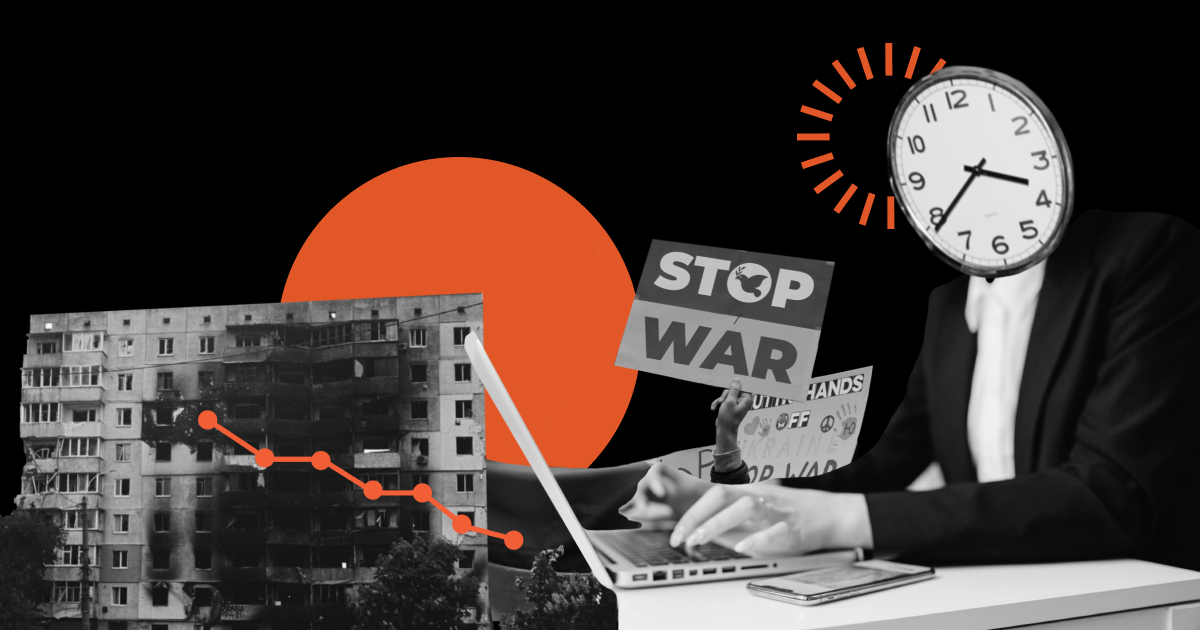
Lviv Media Forum, according to its Creative Director Otar Dovzhenko, supports media as part of a broader mission aimed at strengthening and building healthy communication within Ukrainian society.
Support provided: funding, training, consultations, and retreats. The organization currently runs two major support projects.
The "Fight For Facts" project is implemented in partnership with the Institute of Mass Information and N-ost. Under this initiative, 16 local media outlets receive consultations, training, expert mentoring, financial support, and other forms of assistance. The project began in 2023 and will continue until 2027.
The 16 participating media outlets include: “Hrechka” (Kropyvnytskyi), “Pershyi Kryvorizkyi”, “Vilne Radio”, “Cheline”, Varosh, “Kharkiv Times”, “Skhidnyi Variant”, “18000: News of Cherkasy”, Odesa.online, “Trybuna.Sumy”, Inform.zp, “Poltavska Khvylia”, “Intent”, “NikVesti”, 6262.com.ua (Sloviansk city website), and “Hluzd”.
Among them are both frontline outlets (e.g., in Sumy) and relocated media. Most are digital projects.
The second project is supported by Deutsche Welle Akademie and focuses on thematic (niche) media, including some local ones: Zaporizhzhia Investigative Center, “Liuk” (Kharkiv), “Khmarochos” (Kyiv), PostImpreza (Ivano-Frankivsk), and “We: MediaTheater”, based in Lviv. These editorial teams receive funding, mentorship, audience research, consultations, and other forms of assistance. The project is scheduled to conclude in 2025.
In addition, Lviv Media Forum, with support from NED (National Endowment for Democracy), runs an emergency assistance program for media outlets facing crises and urgent needs — for instance, support following shelling or other emergencies.
According to Otar, the most pressing current needs of regional media are funds to cover salaries, purchase equipment, pay for content production, utilities, office rent, and transportation acquisition and maintenance.
"Among the needs that cannot be measured in money, the top one is personnel: more than half of newsrooms are short on staff. There is also a demand for equipment—particularly power supply sources—transport, psychological support, training, and legal assistance," he added.
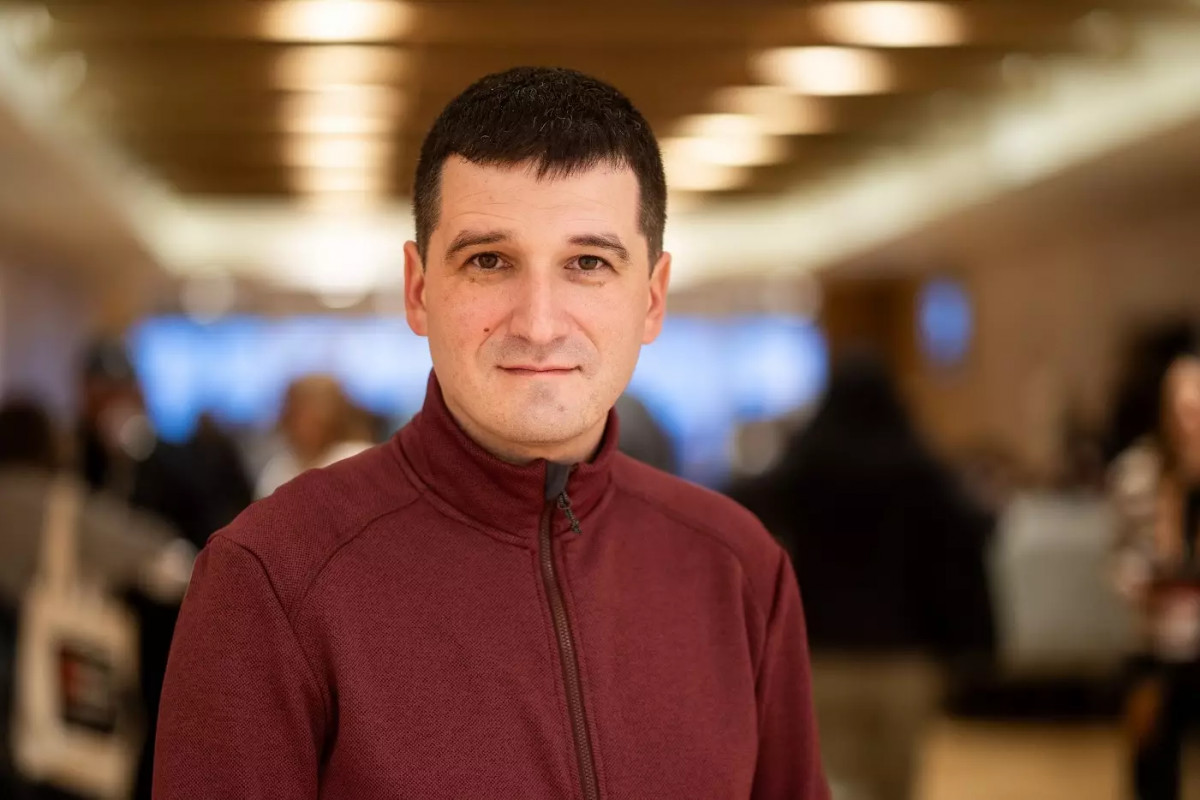
In 2023, the organization shifted its concept from emergency aid for urgent financial needs to strategic support: "Following the principle of ‘it’s better to teach a person to fish than to just give them a fish,’ we are looking for comprehensive ways to support media transformation for those who need it and are ready for it. All our training and learning opportunities have been united under the Media Excellence Program."
Currently, he observes that after the suspension of U.S. assistance, other donors—including international organizations, European foundations, and governments—have been forced to return to more 'emergency' support models. However, as Otar notes, this emergency European funding cannot fully replace U.S. budgetary support: "That’s why we all need to start thinking about how to live with less donor support, what could replace it, or how to more efficiently distribute what still remains."
Main photo: camilo jimenez / Unsplash
